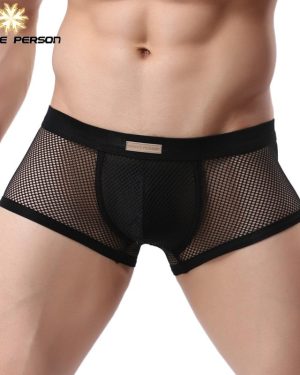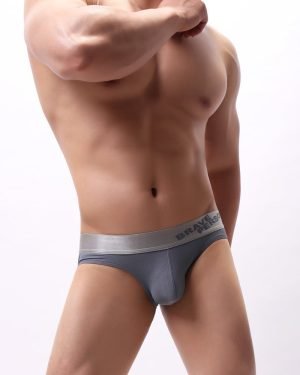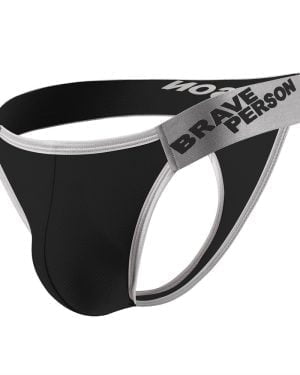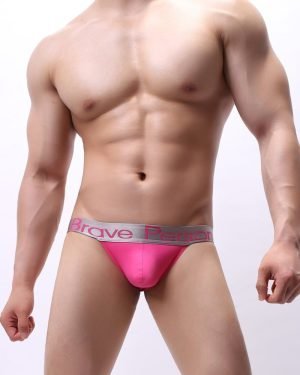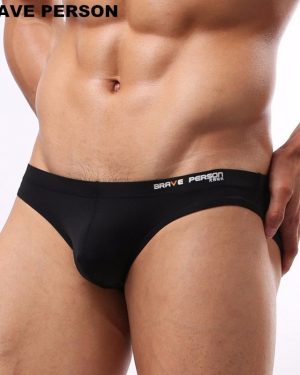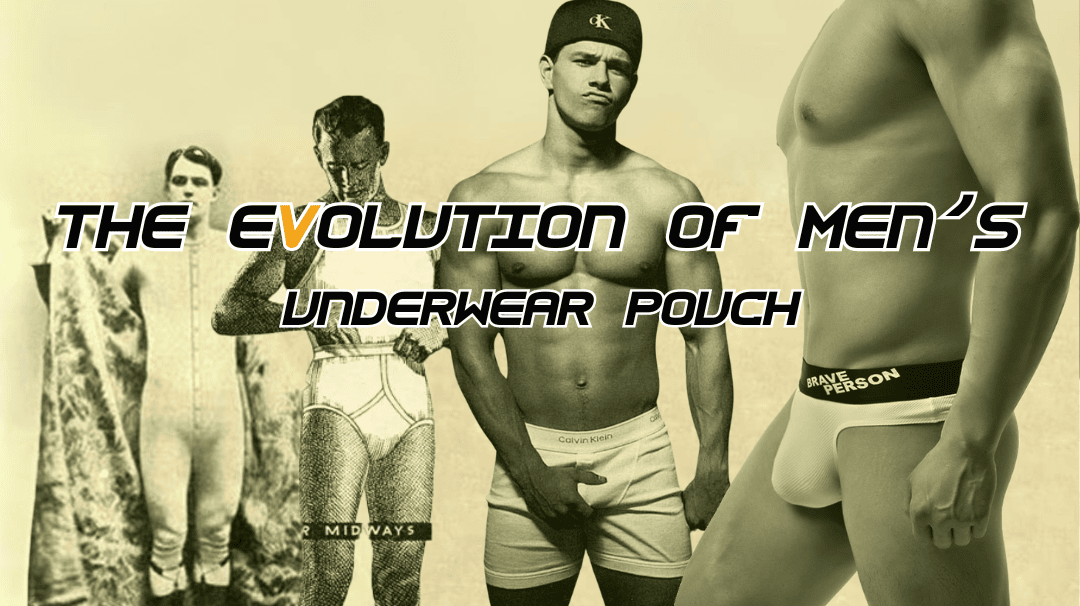
Early Beginnings: Function Over Form
Historically, men’s undergarments were designed with little consideration for the wearer’s comfort or anatomical support. Early 20th-century designs were typically flat-fronted and did not account for the need for additional space and support for the male anatomy.
1930s: The Birth of the Contoured Pouch
1935: The Invention of Briefs

The first significant innovation in men’s underwear design came in 1935 with Arthur Kneibler’s creation of the Jockey brief2. Inspired by a postcard of a man in a form-fitting swimsuit, Kneibler designed a snug, legless garment with a Y-shaped front fly. This design not only provided support but also introduced the idea of a contoured pouch, offering more space and comfort compared to previous flat-front designs.
1950s: The Rise of the Jockstrap

The jockstrap, originally created in the late 19th century for cyclists, gained widespread popularity in the mid-20th century. Its design included a supportive pouch that protected and supported the male anatomy, particularly during sports and physical activities. This functional innovation emphasized the importance of anatomical support.
1970s-1980s: Experimentation and Refinement
During the 1970s and 1980s, there was an increased focus on enhancing the functionality and comfort of men’s underwear. While most mass-market designs still relied on flat-front styles, some niche brands began experimenting with more anatomically friendly pouches, offering better support and a more flattering fit.
1990s: The Boxer Brief Hybrid

In the 1990s, the rise of the boxer brief, popularized by Calvin Klein, brought a new focus to the fit and support of men’s underwear. This hybrid design combined the longer leg of the boxer with the snug fit of the brief, incorporating a contoured pouch that provided better anatomical support and comfort. The success of this style underscored the market’s growing demand for supportive and stylish underwear.
Modern Era: The Revolution of Pouch Underwear
The Rise of anatomical Pouch Designs
The New millennium has seen a significant transformation in men’s underwear with the introduction of anatomical pouch designs.
New developments in the design of men’s underwear have significantly enhanced the male form, particularly in the crotch area. In 2007, the Australian brand aussieBum introduced the ‘Wonderjock,’ responding to customer feedback expressing a desire for a more prominent appearance, akin to women using the Wonderbra. The Wonderjock featured strategically placed seams and an additional pocket within the pouch to lift and enhance the genitals.5
Similarly, brands like Gregg Homme and C-IN2 innovated with designs that included padding built into the pouch or integrated rings that encircled the genitals, pushing them upwards and forwards. This focus on emphasizing the crotch and male virility in underwear, though popularized in the early 2000s, has roots in earlier trends and continues to influence modern designs.
Among those designer brands in early 2000’s, Andrew Christian pioneered the development of underwear with specialized pouches that offer enhanced support, comfort, and aesthetic appeal6. Today there are many designer brands focusing on ergonomic, roomy, natural, contoured or oversized bulge pouches.

- Andrew Christian: Known for its ‘Show-It’, ‘Almost Naked’, and ‘Trophy Boy’ lines, Andrew Christian has revolutionized the market with pouches that provide extra room and lift, enhancing the wearer’s profile.
- Brave Person Underwear: One of many popular designer brands following in Andrew Christian’s footsteps. Focuses on designs that emphasize anatomical support and breathability, ensuring that the underwear is both functional and flattering.
-
Product on sale
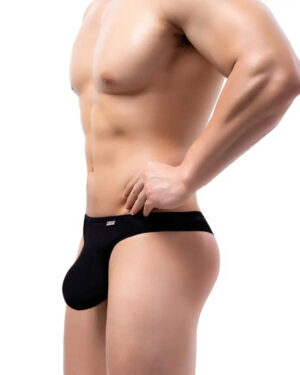 Men’s Anatomical BP Bulge Pouch Modal ThongOriginal price was: 14.24€.10.69€Current price is: 10.69€.
Men’s Anatomical BP Bulge Pouch Modal ThongOriginal price was: 14.24€.10.69€Current price is: 10.69€. -
Product on sale
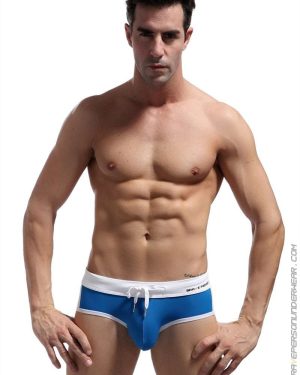 Men’s Bulge Pouch Swim BriefsOriginal price was: 28.49€.17.09€Current price is: 17.09€.
Men’s Bulge Pouch Swim BriefsOriginal price was: 28.49€.17.09€Current price is: 17.09€. -
Product on sale
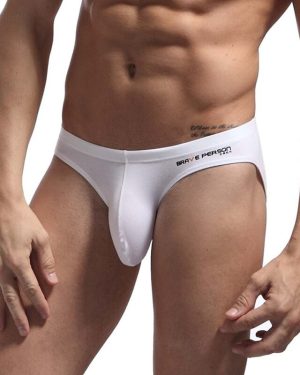 Men’s Anatomical Bulge Pouch Cotton BriefsOriginal price was: 17.09€.12.34€Current price is: 12.34€.
Men’s Anatomical Bulge Pouch Cotton BriefsOriginal price was: 17.09€.12.34€Current price is: 12.34€.
Technological Advancements
Modern pouch underwear benefits from advancements in fabric technology. Materials like moisture-wicking fabrics, antimicrobial treatments, and seamless construction enhance comfort and durability. These innovations cater to the demands of modern life, ensuring that underwear remains comfortable and functional throughout the day.
The Future: Inclusivity, Sustainability, (and visible bulge lines?)
The future of men’s underwear pouch design looks promising, with a continued focus on inclusivity and sustainability. Brands are increasingly offering a wider range of sizes and fits to accommodate diverse body types, reflecting a commitment to body positivity. Sustainable materials and ethical manufacturing practices are also becoming more prevalent, aligning with the growing demand for eco-friendly fashion.
Additionally, there is a movement towards normalizing the idea that men might have visible bulge lines, similar to how women’s visible breast lines are accepted. This shift aims to promote body positivity and confidence, allowing men to feel comfortable and expressive in their choice of underwear.
Conclusion
The evolution of the men’s underwear pouch highlights the industry’s shift towards greater comfort, support, and personal expression. From the early innovations of the 1930s to the modern ergonomic designs of today, the focus has consistently been on enhancing the wearer’s experience. As technological advancements and cultural shifts continue to shape fashion, the men’s underwear pouch will undoubtedly see further innovations, catering to a broad spectrum of preferences and needs.
Sources:

